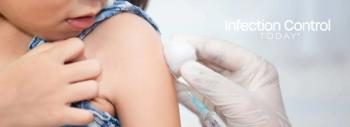
Cedars-Sinai Cuts Infection Rates by More Than 60 Percent After Developing Surgical Protocols
Surgical teams at Cedars-Sinai have reduced surgical site infections by more than 60 percent for patients who undergo colorectal procedures by introducing evidence-based protocols that are easy to follow and relatively low in cost.
Surgeons, nurses, operating room staff and patients all collaborated in a quality improvement project that measured surgical site infection rates from March 2011 to March 2012. Several new steps were introduced to guard against infections, and these have now been expanded and standardized throughout the hospital.
This work marks a significant step toward achieving Cedars-Sinais goal of zero hospital-acquired infections, says Rekha Murthy, MD, director of Hospital Epidemiology. It represents the first of several projects to eliminate post-op infections.
The new approach modified or optimized past practices:
Patients used chlorhexidine antiseptic solution to shower the evening and morning before surgery.
Surgical teams prepared operative sites with a sterile chlorhexidine and alcohol antiseptic solution prior to surgery. After surgery, patients were bathed with chlorhexidine wipes daily.
Antibiotics used immediately prior to surgery were standardized, allowing only those from a short list of appropriate alternatives. For operations lasting more than four hours, a second dose of antibiotics was administered to reduce infection risk.
Use of wound protectors was encouraged to reduce contamination of the skin while handling the intestines.
After completing the contaminated portion of colorectal procedures, members of surgical teams changed to new gowns and gloves, used new instruments, and re-draped operative sites with sterile covers. This reduced contamination of the abdomen and skin during surgical closing procedures.
The technique of daily wound probing was broadly applied in some cases of wounds considered to be at high risk for infection. This involved a simple and inexpensive daily process using cotton-tipped applicators (Q-tips) to release contaminated fluid trapped in wounds.
As a result of these steps and others, the rate of post-operative surgical site infections after colorectal surgeries dropped from a baseline of 15 percent to less than 5 percent within six months.
Doctors said the infection rate continued to decline after the initial rollout of the protocol, remaining well below 5 percent through July 2012, which is the most recent data available. Lower infection rates, they said, translate into fewer visits to the Emergency Department, fewer hospital readmissions, and less need for subsequent operations.
Cedars-Sinai conducted its test as part of a larger national research project on surgical site infections piloted at seven large hospitals across the country, including Stanford University Medical Center and the Mayo Clinic. Under the collaborative, coordinated by The Joint Commissions Center for Transforming Healthcare, the hospitals each worked to develop a protocol to dramatically reduce surgical site infections among patients who underwent colorectal procedures.
Cedars-Sinai was among the hospitals that showed the best results, exceeding the goal for the hospitals to reduce infection rates by 50% and sustaining its success over a prolonged period.
We are very pleased with the results we were able to achieve, says Shirin Towfigh, MD, a faculty member in the Division of General Surgery and the Center for Minimally Invasive Surgery. Our work illustrates that with institutional collaboration and low-cost changes in practice, surgeons can dramatically reduce their patients surgical site infections.
Newsletter
Stay prepared and protected with Infection Control Today's newsletter, delivering essential updates, best practices, and expert insights for infection preventionists.






